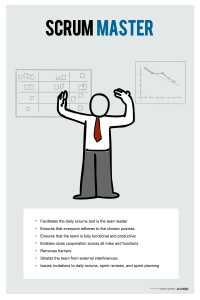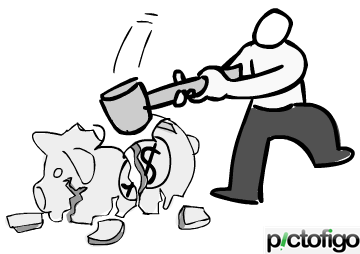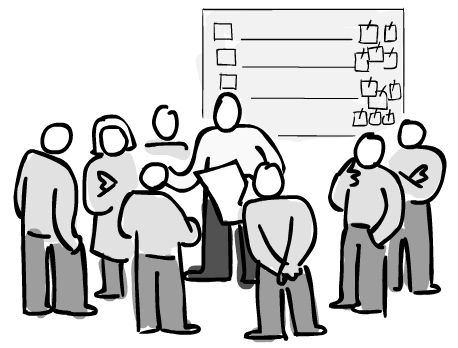I had the wonderful opportunity to meet and listen to Jeff Sutherland a few days ago. For those who do not know who Jeff is, he and Ken Schwaber created Scrum. It was really quite amazing to listen to him speak. The topic of the talk was Using Scrum to avoid bad CMMI implementations.
Scrum and CMMI are often at odds with each other. What does each approach bring to the table? Scrum promotes the idea of focusing on the most important product issues first and supports frequent communication. CMMI brings a structure that promotes consistency and discipline to avoid waste and rework. So, why should we try to combine both approaches? Is this combination a good idea?
This post isn't going to go into detail about the entire talk. Rather, there were three words Jeff said that had me scrambling for my pen. "Muri, Mura, Muda".
The Toyota Production System identifies three types of waste (Muri, Mura, Muda).
Muri (無理, “unreasonable”) is a Japanese term for overburden, unreasonableness or absurdity.
Mura (斑 or ムラ) is traditional general Japanese term for unevenness, inconsistency in physical matter or human spiritual condition. Waste reduction is an effective way to increase profitability.
Muda (無駄) is a traditional Japanese term for an activity that is wasteful and doesn't add value or is unproductive.
With commercial organizations, I consistently see two primary goals: [1] Make Money and [2] Save Money
But as you drill down into an organization, these two goals are not as obvious. So, to address this, I rewrite the two goals as: [1] Deliver Value and [2] Eliminate Waste
When we reach this point, muri, mura, muda come into play. In your day-to-day activities, are there areas you can make more efficient or improve? Do you really need to go to that meeting or can someone just email you an agenda before and minutes after? In your project lifecycle, do you really need a 10-step process workflow or can you achieve the same goal with just 5 steps?
Here is a practical exercise: Make a list of activities you have to do this week. Ask yourself why you need to do each of those activities. Do they map back to the core mission of your company? Should any of these activities be postponed until the goal is clarified? Should you just NOT do one of them?
I have a daily meeting at 10:00. Why? I fill find out what the team did yesterday, what they are doing today, and what impediments they have. My job is to help facilitate their activities and remove roadblocks. This 15 minute meeting is a keeper.
I have an invite to the Finance Working Group meeting on Monday. Why? Hmmm. That's a good questions! The meeting is scheduled for 1hr. I know that it traditionally lasts 2-3hrs. No invoice was attached in the meeting invite. That leads me to believe they are going to review 500 pages as a group. Though it's necessary to review the invoice, this is a very inefficient way of doing it. I will send a request for a copy of the invoice to review when I can. I will decline the meeting invite.
Of those activities on your list, highlight which ones just don't sit well with you. Really listen to your gut. Are any items on your list an activity that does not directly translate into providing value? Are any items on your list going to somehow cut into your personal life? Are any items on your list literally a waste of time, money, or energy!? If you can scratch any one of these items off your list, you are on the road to Kaizen (改善) (English: Continuous Improvement).
Before you accept that next task or meeting invite, ask yourself if there is a better way.
HT: Wikipedia
Like the drawing? You can download it free at Pictofigo


 This morning I had the honor of sharing the keynote stage with Ty Kiisel and Raechel Logan (The hosts of TalkingWork), Donna Fitzgerald (Research Director at Gartner), and Scott Johnson (Founder and CEO of AtTask). From the picture, you can see the size of the crowd that would fill the room a short time later.
This was an amazing experience. It's one thing to present a topic in a conference session. It is a very unique experience to just have a good time in front of an audience of up to 500.
This morning I had the honor of sharing the keynote stage with Ty Kiisel and Raechel Logan (The hosts of TalkingWork), Donna Fitzgerald (Research Director at Gartner), and Scott Johnson (Founder and CEO of AtTask). From the picture, you can see the size of the crowd that would fill the room a short time later.
This was an amazing experience. It's one thing to present a topic in a conference session. It is a very unique experience to just have a good time in front of an audience of up to 500. 
 Our newest
Our newest 

 Though I trimmed a few words for brevity, what I like about these 6 steps is you can take them out of context and the formula still works. Jason was writing about how to be an angel investor & business creator. I am writing about how to be a Product Owner or Agile Team Lead.
Though I trimmed a few words for brevity, what I like about these 6 steps is you can take them out of context and the formula still works. Jason was writing about how to be an angel investor & business creator. I am writing about how to be a Product Owner or Agile Team Lead.